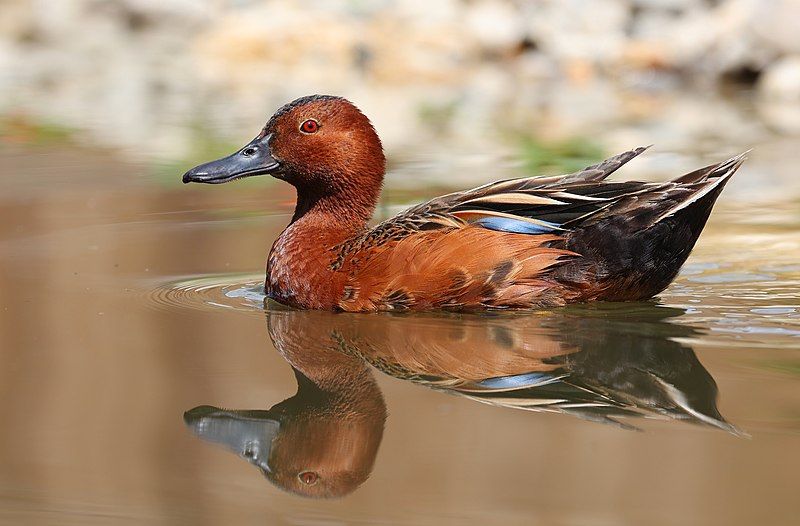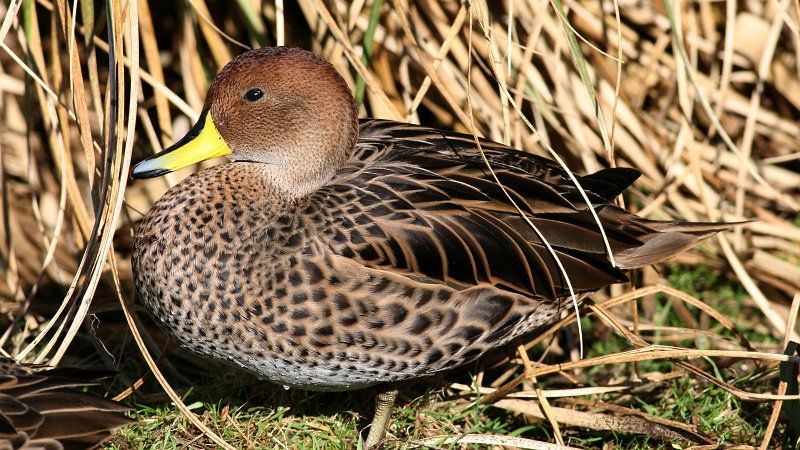Birds are a particular part of the natural world in Yauyos, Peru. With more than 200 species of birds, Yauyos is home to a vast array of birds living in various habitats. From the Andean highlands to the coast, there is something for every bird lover to enjoy in Yauyos.
From colorful macaws to majestic condors, Yauyos is a great place to explore and observe the beauty of birds in their natural habitats. Whether you are a beginner or an experienced birder, Yauyos offers a variety of birding experiences.
With its unique geography, diverse habitats, and a wealth of bird species, Yauyos is one of the most exciting places in the world to explore birds.
8 Birds to Watch in Yauyos
Yauyos is a province in the Lima region of Peru, located in the southeast of the department. It is home to the Nor Yauyos-Cochas Landscape Reserve, a protected area that encompasses diverse ecosystems such as mountains, valleys, rivers, lakes, and forests.
Here are eight birds that you can watch in Yauyos.
1. Andean Goose
The Andean goose is a waterfowl species belonging to the Tadornini tribe of the Anserinae subfamily. This species is native to the South American countries of Argentina, Bolivia, Chile, and Peru.
It is a large bird with a wingspan of up to 1.2 meters and a body length of up to 70cm. The Andean goose is mainly found in wetlands, grasslands, and other freshwater habitats, where it feeds on grasses, leaves, and aquatic invertebrates.
The species is also known to feed on crops, mainly corn. It is primarily a solitary bird, although it may form loose flocks during the breeding season.
The Andean goose is considered to be of least concern by the International Union for Conservation of Nature due to its extensive range and stable population.
| Kingdom | Animalia |
| Phylum | Chordata |
| Class | Aves |
| Order | Anseriformes |
| Family | Anatidae |
| Genus | Chloephaga |
| Species | C. melanoptera |
2. Cinnamon Teal

The cinnamon teal is an adorable species of duck that inhabits many places across western North and South America. It is a small duck, with males usually having bright and vibrant reddish feathers, while females tend to have duller brown plumage.
The cinnamon teal is a dabbling duck, meaning it prefers to feed by tipping its head down into shallow waters, searching for food amongst plants. They live in marshes and ponds and primarily feed on plants.
These ducks often gather in small groups and can be seen gliding gracefully across the water’s surface. Though small, the cinnamon teal is a bright and beautiful sight to behold.
| Kingdom | Animalia |
| Phylum | Chordata |
| Class | Aves |
| Order | Anseriformes |
| Family | Anatidae |
| Genus | Spatula |
| Species | S. cyanoptera |
3. Yellow-billed Pintail

The yellow-billed pintail is a species of duck that belongs to the Anas genus. It is found in South America and has three distinct subspecies. The three subspecies are known by their scientific names: Anas georgica, Anas flavirostris, and Anas bahamensis.
Each of these subspecies has unique physical and behavioral characteristics that differentiate them. The yellow-billed pintail is a medium-sized duck with a long, slender body.
Its head and neck are usually light brown, while its back and wings are dark brown. Its belly is white, and its tail is tipped with yellow. Its bill is long and thin, and its legs are short and gray. It usually weighs between 12 and 22 ounces.
The yellow-billed pintail is a dabbling duck, meaning it feeds by skimming the water’s surface for food. It eats aquatic insects, larvae, and small fish. It also eats seeds, grains, and plants. It can be found in freshwater and saltwater wetlands, lakes, and ponds.
The yellow-billed pintail is a migratory species. It breeds in southern South America, from Tierra del Fuego to Brazil. It migrates north in the winter, as far as Central America.
During the breeding season, the males display courtship behavior, such as chasing and preening. The yellow-billed pintail is an important species to many ecosystems in South America.
It is an important food source for other animals, and its dabbling behavior helps to aerate the water and keep aquatic vegetation healthy. The International Union for Conservation of Nature and Natural Resources lists it as a species of most minor concern.
| Kingdom | Animalia |
| Phylum | Chordata |
| Class | Aves |
| Order | Anseriformes |
| Family | Anatidae |
| Genus | Anas |
| Species | A. georgica |
4. Yellow-billed Teal
The yellow-billed teal is a species of duck native to South America. It is a member of the genus Anas, which contains various duck species. This teal is a member of the subgenus Nettion, which includes the “true” teals.
The yellow-billed teal throughout South America, including Argentina, the Falkland Islands, Chile, Peru, Bolivia, Uruguay, and Brazil. This duck species prefers wetland habitats such as shallow lakes and marshes and feeds on various small aquatic animals.
The yellow-billed teal is generally a timid species and can usually be seen in small flocks. It is an important game bird for hunters in most of its range, and its flesh is considered a delicacy.
| Kingdom | Animalia |
| Phylum | Chordata |
| Class | Aves |
| Order | Anseriformes |
| Family | Anatidae |
| Genus | Anas |
| Species | A. flavirostris |
5. Sickle-winged Guan
The Sickle-winged Guan is a species of bird that belongs to the Cracidae family, which also includes birds such as Chachalacas, Guans, and Curassows. This species is native to four countries: Bolivia, Colombia, Ecuador, and Peru.
It is a medium-sized guan, measuring about 39 cm (15.3 inches) long. Its wings are characteristically long and curved, giving them a sickle-like shape. The Sickle-winged Guan is primarily brown, with white barring on its underparts.
Its throat and forehead are black, and its long tail has a white tip. The species lives in humid montane and lowland forests, as well as in secondary forests, both in the lowlands and on the Andean slopes.
It feeds mainly on fruits and eats some insects and other invertebrates. It is usually found alone or in pairs, and its song is described as a series of soft, low-pitched notes.
The Sickle-winged Guan is listed as Near Threatened by the IUCN due to habitat destruction and fragmentation.
| Kingdom | Animalia |
| Phylum | Chordata |
| Class | Aves |
| Order | Galliformes |
| Family | Cracidae |
| Genus | Chamaepetes |
| Species | C. goudotii |
6. Andean Flamingo
The Andean flamingo is a species native to the Andes mountains of South America. It is closely related to James’s flamingo, so they are both classified in the genus Phoenicoparrus.
These two species of flamingos are very closely related and have very similar characteristics. They have a long neck and legs, a bright pink color, and a hefty bill. Their diet consists mainly of algae and insects.
Until 2014, the Andean flamingo was classified in the genus Phoenicopterus but was later reclassified into the genus Phoenicoparrus along with James’s flamingo.
This move was made to more accurately reflect the two species’ relationship and better group them together. The Andean flamingo is an important species for conservation and research in South America.
Scientists need to understand the relationship between the two species and how they interact with their environment. This can give insight into how other species may interact with their environment and how to protect them in the future.
| Kingdom | Animalia |
| Phylum | Chordata |
| Class | Aves |
| Order | Phoenicopteriformes |
| Family | Phoenicopteridae |
| Genus | Phoenicoparrus |
| Species | P. andinus |
7. White-throated Tinamou
The white-throated tinamou is a bird species native to the Amazon rainforest in South America. This bird species can be found throughout Brazil, northern Bolivia, southeastern Colombia, northeastern Ecuador, eastern Peru, and southern Venezuela.
This bird species is typically found in the rainforest understory, making it an excellent candidate for studying the effects of deforestation in the region. The white-throated tinamou is a small bird, usually measuring 8.7 and 10 inches long.
The bird has a white throat, a brown back, and a black crown. The white-throated tinamou feeds mainly on insects, seeds, and small fruits.
It is an omnivore known to forage for food on the forest floor. The white-throated tinamou is an integral part of the Amazon’s ecosystem, as it helps to maintain the balance of the forest’s food chain.
The bird also plays a vital role in seed dispersal, which helps to promote the growth of new plants in the region. Unfortunately, the white-throated tinamou is threatened by the destruction of its habitat due to deforestation.
An urgent need is to conserve the Amazon rainforest and protect its species, including the white-throated tinamou, from further destruction.
| Kingdom | Animalia |
| Phylum | Chordata |
| Class | Aves |
| Order | Tinamiformes |
| Family | Tinamidae |
| Genus | Tinamus |
| Species | T. guttatus |
8. Sira Curassow
The Sira curassow is an endangered bird species belonging to the family Cracidae. It is native to the Cerros del Sira, a mountain range located in the central region of Peru.
The Sira curassow inhabits tropical, humid, and montane cloud forests, which provide a unique and diverse range of resources. These forests are characterized by a high humidity level and clouds that travel through the mountain range.
This environment is ideal for the Sira curassow, which is well adapted to the moist conditions. It can use the forest’s resources, food, and shelter.
The Sira curassow is an essential species for the Cerros del Sira, as it helps maintain the ecosystem’s balance. Unfortunately, it is facing several threats from habitat loss and hunting, which have caused a decrease in its population.
Conservation efforts are needed to help protect the Sira curassow and its habitat so that it can continue to thrive in the Cerros del Sira.
| Kingdom | Animalia |
| Phylum | Chordata |
| Class | Aves |
| Order | Galliformes |
| Family | Cracidae |
| Genus | Pauxi |
| Species | P. koepckeae |
Conclusion
Birds in Yauyos provide a unique and essential part of the natural environment. They can be seen in many areas throughout the region, providing a source of beauty and interest.
They are also crucial for controlling insect populations, providing food for other animals, and dispersing seeds. Thus, birds in Yauyos are essential to the local ecosystem and should be protected and respected.